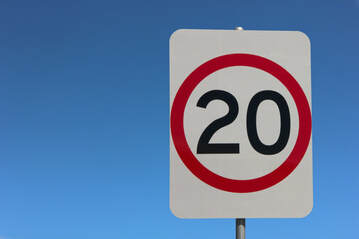|
Writing numbers – that’s simple, isn’t it? You just use those keys from 1 to 0 near the top of the keyboard, or that number pad on the right. If only it were that simple. Very often, it’s better to use words instead of numerals. If you’re writing for someone else, they might expect you use words in some situations. As with so many things in the world of writing, this is mainly about style choices – and adapting your style to suit the type of material, its purpose, its context and its target audience. The ‘what’First, we need to consider what kind of number we’re writing, and what it refers to …
The ‘why’So, what’s the point in all this variation? And how do we, or the people we’re writing or editing for, choose a style? These aren’t just arbitrary rules. Words work better in some contexts, numerals in others. They each have their advantages and drawbacks. Why use words?
Why use numerals?
In fiction, numbers tend to be used less, and to be less significant, than in non-fiction writing. And, in a book that’s going to be read for pleasure rather than out of necessity, it’s important to make the pages look appealing. This means minimising things that might ‘jump off the page’ and have a jarring effect – including numerals – if they’re to be used at all. So, it’s common for most, or even all, types of numbers to appear in word format. The same applies to the more creative, literary end of the non-fiction spectrum. The reader should be allowed to get swept along in the narrative, with the visual aspects of the book giving them as few jolts as possible. However, it’s a different story with writing that revolves around hard facts, such as business, technical or instructional material, and sometimes (depending on the subject) in academic or educational content as well. Here, numbers often play a big role in getting the message across, and there’s nothing wrong with making them stand out. You might well want the reader to absorb the numbers quickly, and perhaps compare or contrast them with each other. Making the pages look pretty is less of a priority. In tables, charts and diagrams, especially, numerals make a stronger impact than words. Odds and endsIn almost any kind of writing, a number that acts as an identifier is usually written in numerals – for example, the number of a chapter in a book, or of a house on a named street. It’s generally agreed that we should avoid starting a sentence with one or more numerals. This can look a bit odd, and in some contexts, the number might be mistaken for a section or paragraph reference. There are some grey areas, a common one being where numbers above and below the words-to-numerals limit are used close together and in a closely related way. For example: ‘Their children were aged nine and 11.’ This can look a bit odd and jarring, and some style guides recommend choosing one style for both or all of the numbers – but others suggest that it isn’t enough of a problem to warrant breaking the usual rule. And there are other related style issues that I won’t go into here, just to keep this thing fairly brief: commas in numbers above 999 (‘2,485’ vs ‘2485’), ordinal numbers (‘5th’ vs ‘fifth’), elision (‘341–5’, ‘341–45’ or ‘341–345’), dates, times, money amounts, percentages, sport scores, phone numbers. Mind how you goIt’s worth paying attention to the way you write numbers: it makes a difference to the readability and impact power of the material you’re writing. There are no universally ‘right’ or ‘wrong’ ways, but following sensible guidelines can help you get the right balance between clarity and ease of reading – according to what you’re writing, who you’re writing it for, and why.
0 Comments
Your comment will be posted after it is approved.
Leave a Reply. |
Thoughts on Words
An editorial blog. Posts by Graham Hughes. Archives
July 2024
Categories |




